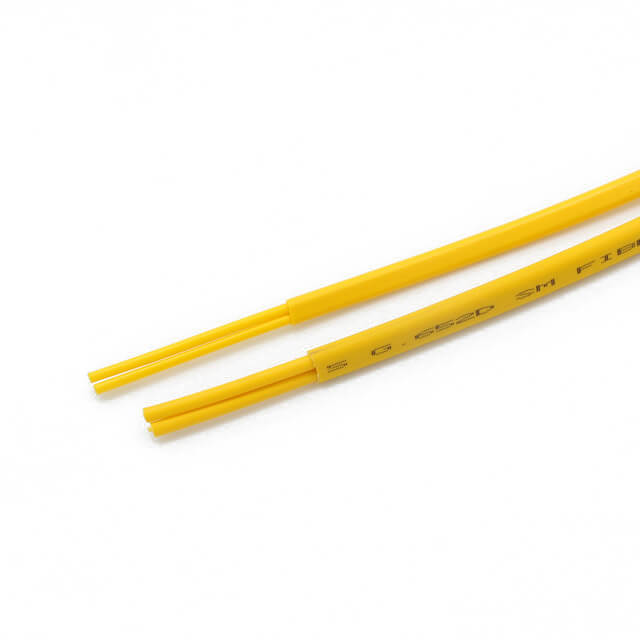When selecting fiber optic cables for your networking needs, Kecheng’s flat twin duplex fiber optic cables stand out as a premier choice. Known for their reliability, high performance, and innovative design, these cables offer significant advantages for a range of applications. In this guide, we’ll explore the key features of Kecheng’s flat twin duplex fiber optic cables and provide solutions to common problems you might encounter.
Key Features of Kecheng Flat Twin Duplex Fiber Optic Cables
1. High-Performance Transmission
Kecheng’s flat twin duplex fiber optic cables are engineered for high-speed data transmission with minimal signal loss. These cables support high bandwidth and are ideal for applications requiring fast and reliable data communication, such as data centers, telecommunications, and network infrastructures.
2. Flat and Flexible Design
The flat design of these cables offers enhanced flexibility compared to traditional round cables. This design allows for easier installation in tight spaces and makes routing more efficient, particularly in areas with limited space or complex cabling requirements.
3. Duplex Configuration
These cables feature a duplex configuration, which enables bidirectional data transmission. This means that data can be sent and received simultaneously, effectively doubling the capacity of the communication channel and improving overall efficiency.
4. Robust Construction
Kecheng’s cables are built with high-quality materials that ensure durability and reliability. They are designed to withstand physical stress, environmental conditions, and general wear and tear, making them suitable for both indoor and outdoor installations.
5. Low Attenuation and High Return Loss
The cables are manufactured to provide low attenuation and high return loss, ensuring minimal signal degradation over long distances. This performance is crucial for maintaining the integrity of data transmission and ensuring reliable communication.
6. Easy Installation and Termination
Kecheng’s flat twin duplex fiber optic cables come with user-friendly features that simplify installation and termination. The design facilitates easy stripping and splicing, reducing installation time and effort while ensuring secure and accurate connections.

Flat Twin Duplex Fiber Optic Cable
Common Problems and Solutions
1. Signal Loss or Attenuation
Problem: You may experience higher-than-expected signal loss or attenuation in your fiber optic network.
Solution:
- Check for Bends: Ensure that the cable is not bent beyond its minimum bend radius. Sharp bends can cause increased attenuation and signal loss.
- Inspect Connections: Verify that all connectors and splices are properly installed and secure. Poorly terminated or damaged connectors can lead to signal loss.
- Clean the Fibers: Dirt or debris on the fiber ends can cause increased attenuation. Use fiber optic cleaning tools to clean the connectors and ensure a clear optical path.
2. Connector Misalignment
Problem: Misalignment of connectors can lead to signal degradation or connection issues.
Solution:
- Verify Alignment: Ensure that connectors are correctly aligned and securely fastened. Misalignment can disrupt signal transmission and cause data errors.
- Check for Damage: Inspect connectors and fiber ends for damage or debris. Replace any damaged components to restore proper alignment and performance.
3. High Return Loss
Problem: High return loss can affect signal quality and lead to poor performance.
Solution:
- Inspect Terminations: Ensure that fiber terminations are smooth and properly polished. Poorly polished fiber ends can cause high return loss.
- Verify Connector Quality: Use high-quality connectors designed to minimize return loss. Ensure that connectors are properly installed and free from defects.
4. Cable Physical Damage
Problem: Physical damage to the cable, such as cuts or abrasions, can affect performance and reliability.
Solution:
- Inspect Cable: Regularly inspect the cable for signs of physical damage. Address any issues promptly to prevent further damage.
- Use Protective Covers: When installing cables in areas prone to physical stress, use protective covers or conduits to safeguard the cables from damage.
5. Environmental Factors
Problem: Environmental conditions, such as extreme temperatures or moisture, can impact cable performance.
Solution:
- Select Appropriate Cable: Ensure that the cable is suitable for the environmental conditions of the installation area. Kecheng offers cables designed for both indoor and outdoor use.
- Implement Environmental Protection: Use protective measures, such as weatherproof enclosures or cable jackets, to shield the cables from environmental factors.
6. Installation Challenges
Problem: Difficulties during installation, such as tight spaces or complex routing, can complicate the process.
Solution:
- Plan Installation: Carefully plan the cable routing and installation process to minimize challenges. Utilize the flat design of the cable to navigate tight spaces more easily.
- Use Installation Tools: Employ specialized tools and techniques for fiber optic cable installation to ensure accurate and efficient placement.
Conclusion
Kecheng’s flat twin duplex fiber optic cables are a top choice for high-performance, flexible, and reliable data transmission. With features such as high performance, robust construction, and easy installation, these cables meet the demands of various applications while ensuring reliable communication.
By addressing common problems such as signal loss, connector misalignment, high return loss, and physical damage, you can maintain optimal performance and reliability in your fiber optic network. For more detailed information or specific troubleshooting support, consult Kecheng’s technical resources and customer support. With the right approach, Kecheng’s fiber optic cables will provide exceptional performance and durability for your networking needs.


